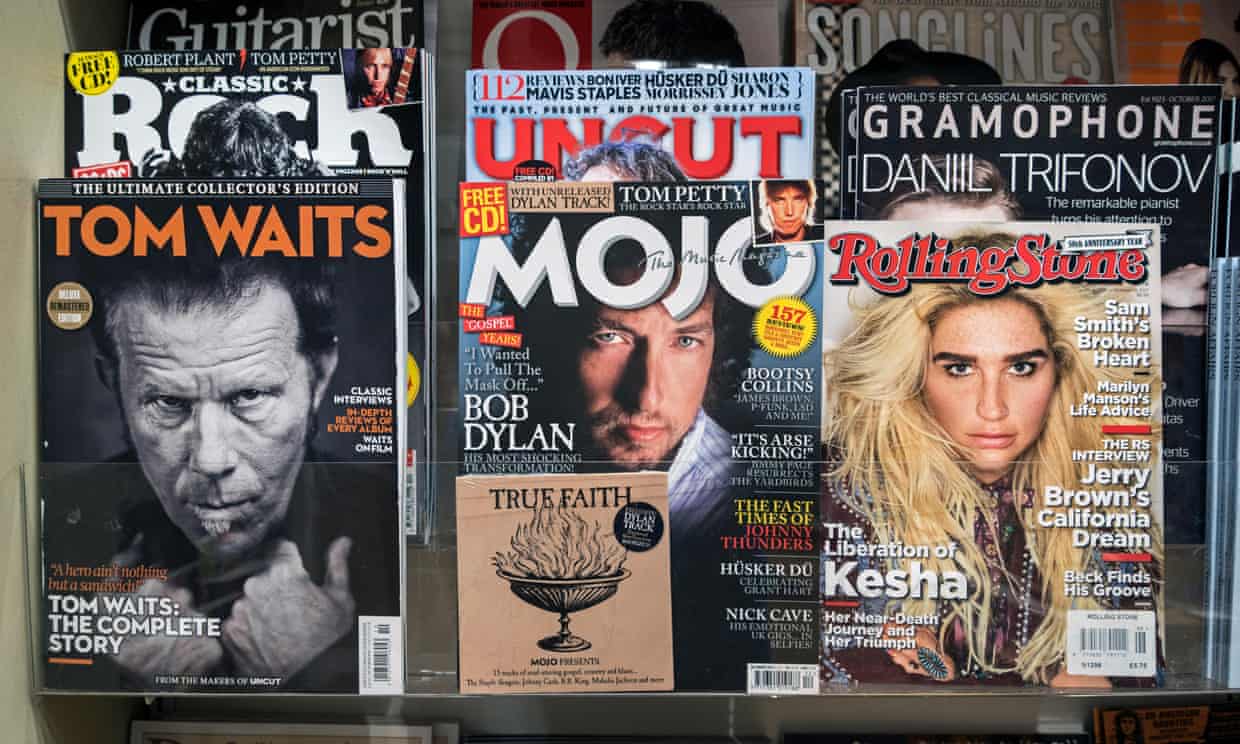Facebook’s Q4 numbers speak for themselves: $28 billion in revenue with a profit of $11.2 billion. That’s a 31 percent and 53 percent year-on-year increase, respectively. That’s insane. But FB’s ability to mint money isn’t news. Rather, it’s Zuckerberg’s comments on Apple:
- Apple has “every incentive to use its dominant platform position to interfere with how our apps work to favor their own, which they regularly do.”
- “We see Apple as one of our biggest competitors”
- “Apple may say this is to help people but these moves are in their competitive interests”
He’s alluding to the upcoming privacy changes on Apple which could limit Facebook’s growth. These include new privacy labels and explicit user consent on being tracked by the app. These changes in iOS could affect first party data on news apps as well.
Bytedance is cutting “more than two-thirds” of its workforce in India, where the government has extended its ban on TikTok and other Chinese apps. “It is deeply regretful that after supporting our 2000+ employees in India for more than half a year, we have no choice but to scale back the size of our workforce.”
Twitter and newsletters don’t seem to sit together on a product shelf. But that didn’t stop Twitter from buying Revue, a Dutch startup that helps people publish and monetize their newsletters. No mention of financial terms. I don’t get it, but according to the announcement, Twitter says this will “help writers grow their paid subscribers while also incentivizing them to produce engaging and relevant content that drives conversations on Twitter.” See if you can make sense of this blog post.
Dan Rather, 90, is now on Substack. This is “a form of direct communication, a way for me to build and cultivate that community that I feel is so important.”
The good news is that people are spending more time consuming online media. The bad news (for some) is that the overall share of time captured by ad-supported media is declining. User-supported media — memberships, subscriptions, etc — is growing.
Hunter S. Thompson must be rolling in his grave. Rolling Stone is offering “thought leaders” $2,000 for the “opportunity to publish original content to the Rolling Stone website”.
Taboola is going public through a SPAC. It’ll merge with ION Acquisition Corp, and will trade on the New York Stock Exchange in Q2. The deal will value Taboola at $2.6 billion.
You know those Windows 10 sound effects, right? There’s a Korean a cappella group that sings them shockingly well. #window #microsoft #humaneffect
Table of Contents
Boosting creativity with data
Many content marketers believe success comes down to creativity — it’s the key to grabbing attention and making a message stick. Creativity is still a big part but data is vital for understanding your audience, gaining a competitive edge, boosting visibility and measuring success. While data can’t replace creativity, it does increase its chance of success — the key is finding a balance.
Why data matters
Consumers create a lot of data, 2.5 quintillion bytes each day. Thankfully for marketers not all of this data is helpful — so what do you focus on? To get the most out of your data you need to perform a quality check — what are your data sources and what are they telling you? This allows you to achieve personalisation, cross channel messaging and inclusive marketing. From a creative perspective, this allows you to craft the right message that works over multiple touch points.
Data and humans
When we think about data, we think facts and statistics that help to make logical decisions. Basically the complete opposite of humans and their emotions. The pandemic showed that situations can change overnight making old messaging irrelevant. Marketers need to look beyond the idea of users or consumers and understand the broader human experience. Creative is vital to make this connection.
Virtual influencers
It only feels like yesterday that marketers were arguing the pros and cons of influencers. Well, it’s time for round two with the rise of the virtual influencer. “Virtual influencers (VIs) are defined as fictional computer-generated influencers who have the characteristics and personalities of human influencers.” It’s a trend currently being led by the Chinese and Japanese markets.
Virtual = more reliable?
The first virtual influencer was a character called Lil Miquela, presented as a “change-seeking robot”. According to the anonymous creators, Miquela is “the most reliable partner you could hire”. She appeals to Gen Z and Millennials and it’s easier to control the story and narrative since she’s a virtual character. More appealingly, brands don’t have to compete with influencers off-platform life. Humans tend to create more scandals.
What about engagement?
If the figures are anything to go by, consumers are more than happy to listen to virtual influencers. Miquela’s engagement rate is 2.7%, compared to the industry average of 0.7%. Virtual influencers could be a cost effective way for smaller or niche operators to enter the influencer marketing game. Plus, improvements in CGI and AI technology could lead to live styled events creating a new virtual marketing world. We too are working on our own virtual influencer, stay tuned for more on that.
BMW’s collage style animation offers a unique look at the concept and history of horsepower.
It’s not exactly Deadliest Catch but Stabicraft still manages some amazing ocean shots as a local fisherman tells his sea stories. #2500ultracab
European insurance company Revolut uses social-inspired video complete with newsfeed to showcase its product.
Adobe embraces diversity and inclusion with a profile of photographer Dana Scruggs and the increased visibility of Black creatives.
Inspired by Noir and spy films from the ‘60s, real estate firm Long & Foster creates a mixed media animation to lift the mystery around buying a home.
Starting-up a newsletter? You can now use Twitter. Twitter just acquired Revue, our Dutch friends’ editorial newsletter service. Starting one is free (with all their Pro features enabled), and the company will only take a 5% fee on your paid newsletter (Substack currently takes 10%). “We wanted to make sending an email newsletter as simple and enjoyable as Tweeting.” There are loads of integrations with other services, and an API to build on. They’re also building out an enterprise version for larger publishers. This is enormous validation for the newsletter biz as a category all by itself, thanks to big daddy front-runners like Mailchimp to upstarts like Substack and now Twitter. Newsletters are all grown up now. Read more at Twitter blog > Making Twitter a better home for writers

Starting-up a newsletter? You can now use Twitter.
Rolling Stone magazine has a new old media product: pay to write for them. The pitch is as follows: if you’re a vetted ‘thought leader’, you pay Rolling Stone $2,000 “to shape the future of culture.” The whole thing is invitation-only, and is packaged as a membership program, with an annual fee of $1,500 and an upfront fee of $500. I’m not entirely sure how this paid content model would work with their readers — after all, if you were actually leading thought in any form, you would probably be in the magazine in the first place. And would it really help the brand to have PR companies paying to place their clients in Rolling Stone? “Being published in one of the best-known entertainment media outlets in the world sets you apart as a visionary, leader, and bold voice in your industry.” Ew. Publication is not guaranteed.

Rolling Stone magazine is seen on display with other music publications. Photograph: Alan Wilson/Alamy
Have you hate-played Cyberpunk yet? I haven’t. Cyberpunk 2077 is the legendary action role-playing game (RPG) from the Polish video game developers CD Projekt Red. By now, we know that when people finally got their hands on the long-awaited game, controversy erupted about how terrible it is — there are some serious-bordering-on-hilarious basic gameplay issues that have rendered it almost unplayable. There is a lot that can make the difference between a game’s playability and unplayability, but having a good heads-up display (HUD) is half the battle won. This isn’t just a great UX review of the Cyberpunk HUD — it actually makes recommendations. The writer makes a great case for consistent colour coding (“No consistency inside the HUD’s colors decrease learnability” 😍), ornamentally extraneous graphic elements, navigational icon visibility, and more. Gamers are crazy, but gamers get interaction design like nobody else.

Cyberpunk 2077 is the legendary action role-playing game (RPG) from the Polish video game developers CD Projekt Red.
WAN-IFRA redesigned their brand and website. The website looks fairly generic, with a headline typeface that has f a r t o o m u c h kerning going on. As for the new branding, does it really bring to light WAN-IFRA’s “call for a strategic realignment within the industry” and demonstrate their “commitment to building a more robust symbiotic ecosystem for news”? I’m not sure. The Eighties called and they want their logo back — it looks like it wants to be a video game title. I can almost hear the briefing meeting: “Make it futuristic!” Digital!”, they must surely have said. But it’s not just about the aesthetics. The new logo is well-structured and cohesive. It’s a balanced composition of elements. And it’s a massive improvement over their previous logo, which involved a clipart quill doing dangerous things with a clipart globe. These are different times, and it’s great to see the venerable WAN-IFRA making such a refreshing change.

WAN-IFRA redesigned their brand and website.
James Fridman uses the power of Adobe Photoshop for good. Have you seen this guy’s work on the interwebs? He’s hilarious and talented and has meme-appeal. He’s also compassionate and has his political heart in the right place. This designer has a superpower that he unleashes to do gratuitous good. While you’re here, let’s talk about Photoshop’s Hulk-like grip over our unrealistic benchmarks for what’s acceptable with regards to body image. Adobe should adopt this man and never let him go — and it’s not just because he has mad skills.
Do you have a side project that is suspiciously beginning to look like it should be your full-time thing? “Side Hustle Stack is a FREE resource to find platform-based work, ranging from gig work and side hustles to platforms that help you start a small business that can grow.” Alan and I are smiling in that proud-parent type way because one of the co-founders is the mighty Lila Shroff, one of our Splice Beta Fellows from when we did Beta back in September. Side Hustle Stack looks amazing, and if this is what she’s done in her gap year, we can’t wait to see if she’ll hire us when she continues on her trajectory towards world conquest. They’ve got traction, they’ve got sponsors, they’ve got game.
Netflix says it’s crossed 200 million global subscribers in its latest earnings report. More importantly, it says it’s now “very close” to financial sustainability. This has big implications for the company as it’ll no longer need to borrow money to pay for billions of dollars in shortfall every year. It’ll also start buying back shares to soak up excess cash.
Apple is reportedly planning a subscription service for podcasts. This is part of a trend toward the balkanisation of podcasts — you’ll see more titles tucked behind subscriptions.
Forbes is coming up with a Substack competitor. They’re hoping to bring in independent writers with the promise of guaranteed salaries and benefits — and a 50-50 rev share on the subscriptions. This could be the middle ground solution needed to launch semi-independent careers.
Andreessen Horowitz is reportedly planning to start its own media service. The Information says the Silicon Valley investment firm plans to expand its publication of tech and business content that’s “unapologetically pro-tech, pro-future, pro-change”. It’s now looking for an executive editor and an opinions editor. Creating “owned” content isn’t exactly new, but it’s an important shift for a tech industry that needs thoughtful, well-articulated points of view that mass media journalists often lack.
Singapore’s Business Times started a paid weekly newsletter that covers ASEAN. I’ve been looking forward to something like this — a standalone product that doesn’t require you to buy a bundled subscription to the entire newspaper. Signed up!
Australia’s SBS is launching a new digital service for Mandarin and Cantonese-speaking Australians just in time for the Lunar New Year. “SBS中文 goes to the very heart of the SBS Charter, not only informing communities but also reflecting our multicultural society and promoting greater understanding across cultures.”
The BBC is under pressure to cut one-fifth of its output to reduce costs. The National Audit Office said the BBC’s license fees in the UK were “under pressure”, at a time when programming and staff costs were rising. Streaming services have also been drawing away younger audiences.
Medium acquired Glose, a social ebook company. Interesting as that sounds, it’s not clear why they bought it since the product won’t be covered in Medium’s monthly and annual subscriptions.
The SOPA 2021 Awards are now open for submissions. Details here.
The Sigma Awards launched the Sigmas Slack channel. The organisers (which include the awesome Keng!) will use this for events and share information related to data journalism. All journalists are welcome to join. Start here.
The U.S. asked Australia to drop its plans to force Google and Facebook to pay news publishers for their content. It said the proposed legislation is unreasonable, impractical, and “fundamentally imbalanced” while potentially running counter to the free trade agreement between both countries.
India wants WhatsApp to drop its plans to change the app’s privacy policy. The IT ministry said it has “grave concerns regarding the implications for the choice and autonomy of Indian citizens”.
The growth of e-commerce live streaming
With consumers spending most of 2020 at home it’s unsurprising many sectors experienced an acceleration in e-commerce. One of the more interesting content marketing trends to emerge from this online buying spree is e-commerce live streaming or live shopping. Essentially, these are like the old TV infomercials, but online and interactive.
Why e-commerce live streaming matters
In Singapore, live streaming has been responsible for a massive spike in the island’s e-commerce market. Since March last year, conversions from live streaming and gamification of the online shopping experience grew by 1890%. 2020 also saw the launch of Singapore’s first dedicated live streaming e-commerce platform, Shopavision. In the pre-launch alone, it ran 40 live streams that received 400,000 views and resulted in S$60,000 worth of sales.
The China market and regulation
Shopavision was inspired by its CEO’s regular visits to China, where e-commerce live streaming is huge. In 2020, 30% of the population viewed shopping-related live streams and that figure is projected to grow to 39% this year — that’s 560 million customers. This unprecedented growth has forced China to implement regulation of the sector. These standards are aimed at product quality, hyperbolic advertising, and training for live streaming professionals.
Big tech’s news power
In Australia, Google is facing government moves to pay local news organizations for sharing its content. In retaliation to this proposed mandatory code of conduct, Google has been conducting algorithm experiments by burying links to Australian news sites in search results. Google obviously doesn’t want to set a global precedent by paying for content and its experiment shows it can simply make news outlets disappear online. Facebook will also be required to pay local news organizations; its response was to threaten to ban Australian users from posting news content.
Fitbit deal completed
The stoush (Aussie slang for ‘fight’) with the Australian Government comes as Google completes its US$2.1 billion acquisition of Fitbit. Considering Google makes most of its money selling ads based on the data it collects from users, it has prompted concerns the sale will give the search giant access to deeper levels of personal data. In Europe, Google has been forced to agree to not use this data to sell ads.
The publishing debate
This regulation of what big tech can and can’t do is likely to continue as the extent of their power over our digital lives grows. In the US Facebook has actually been campaigning for better regulation. The big one will be the exemption the tech giants have from the rules that govern what other media outlets can publish or broadcast. It would seem it’s only a matter of time before the playing field is levelled.
Mailchimp has produced a 12-part animated series, All in a Day’s Work, taking a humorous look at modern working conditions. The first ep is a take on Silicon Valley and the myth of starting out in your garage.
Salesforce offers a new take on the case study with a video explaining how it distributed 60 million pieces of PPE around the world. #Salesforce #UCSF
Website design platform, Webflow, poses the question, what if real life was like web design?
This guy loves Korean Fried Chicken so much he travelled to the source to see how it was made. Samsung assures us this was done before the COVID breakout. #FlexZone #Refrigerator #SamsungHome
Old pieces of content can always be repurposed. Microsoft took 24 UX videos, made between 2018 and 2020, and created a new showcase of its digital offerings.